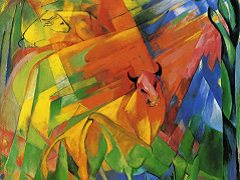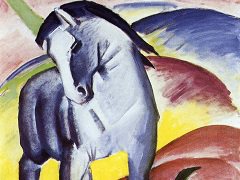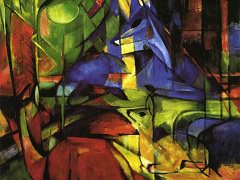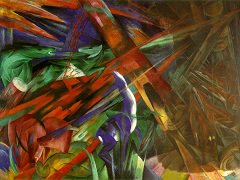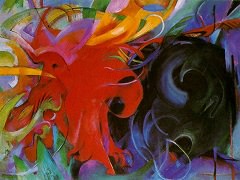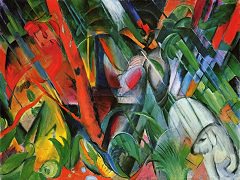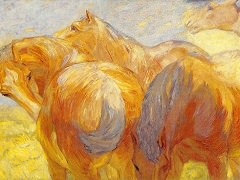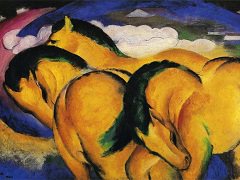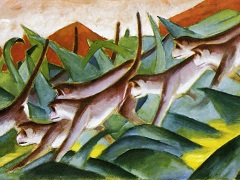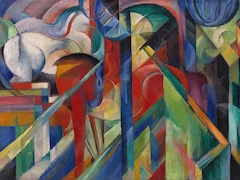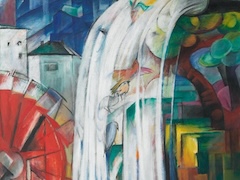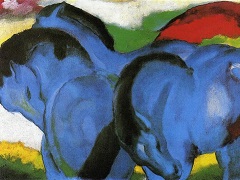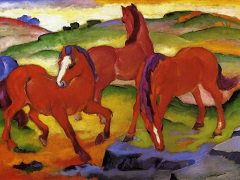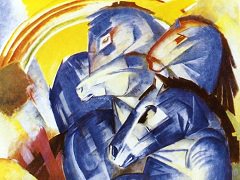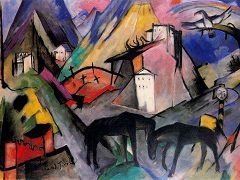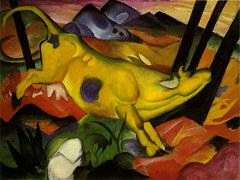The Large Blue Horses, by Franz Marc
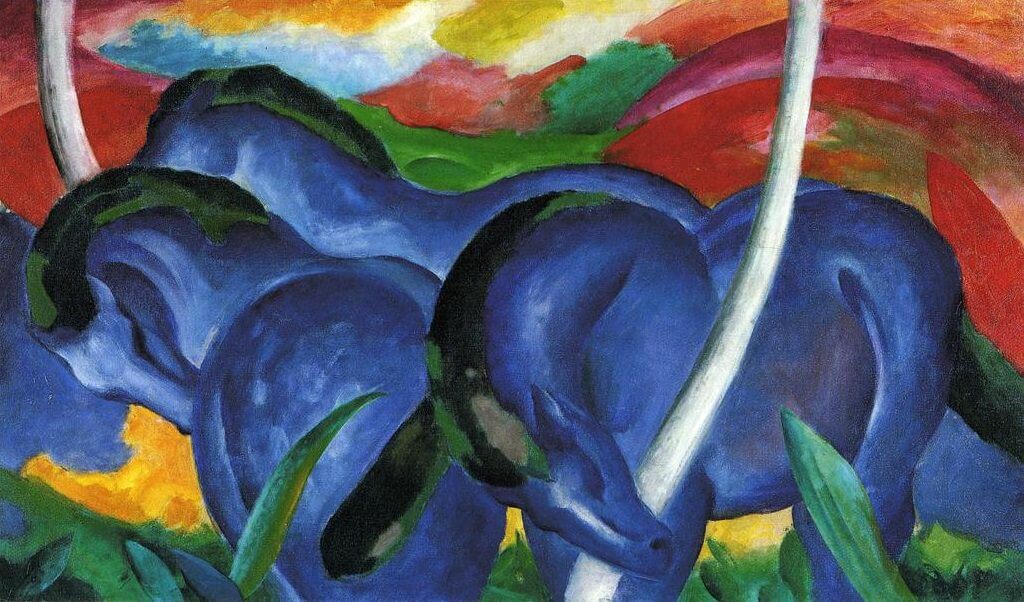
Following Red Horses and Yellow Cow, Marc completed his suite of monumental, primary-color compositions in 1911 with The Large Blue Horses. He returned to the Lenggries Horse Painting for the pose of the animals and for the semi-circular arrangement, with all pointing to the left. The group of animals is rather awkward and bulky, as they are bunched in a small, constricted, entirely blue area, with the viewer's vantage point close to the action. Compositionally, the animals are more fully integrated with a hilly landscape than was the case in Red Horses.
In contrast to the Yellow Cow framed by four black tree trunks or branches, the horses are encircled, almost like a halo, by a pair of white lines. These recall the long, abstract, free-floating lines that were frequently
present in Kandinsky's work, yet remain treelike in character. Later, in the apocalyptic Fate of the Animals, 1913, similar treelike forms fall on various animals causing their death.
Blue Horses in symbolically bound to certain of the originating conceptions of the contemporaneous Blue rider group: in the symbol of the horse as a vehicle of breakthrough, in the emphasis on the spirituality of blue, and
in the idea of spirituality battling materialism. That Marc had employed four horses in his earlier composition of the Lenggries Horse Painting and reduced the number to three in 1911 may reflect the further influence of Kandinsky,
who, following theosopyical practice, employed three instead of four horses as reflective of the apocalypse. But the absence of a rider is in keeping with Marc's own belief in the supremacy of animal spirituality over that of humans.

